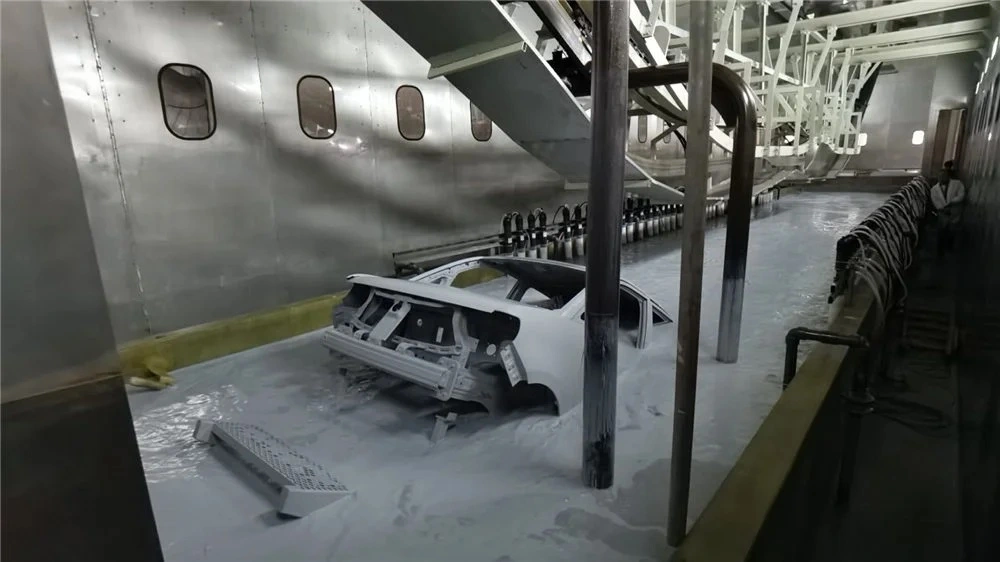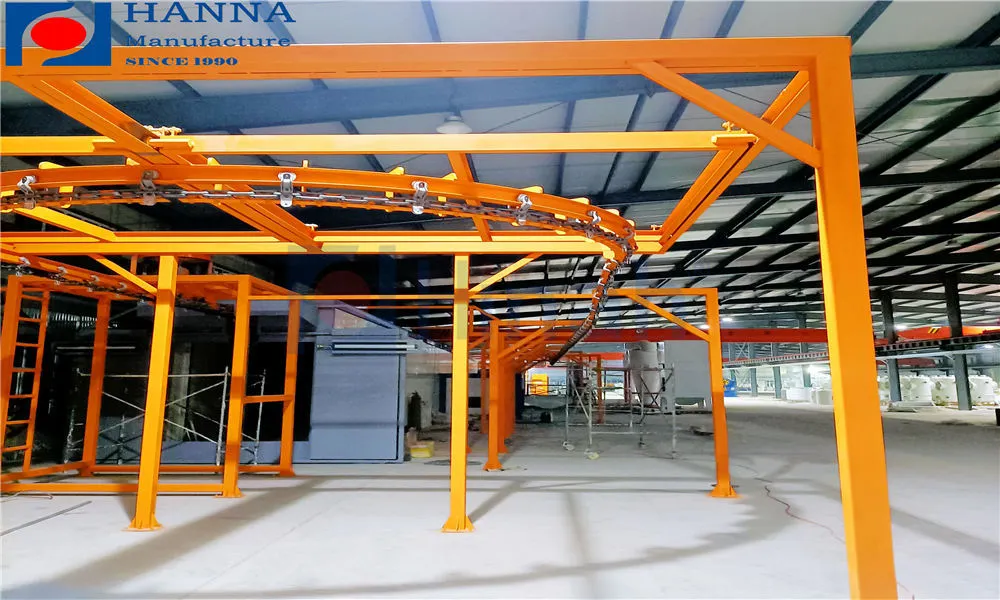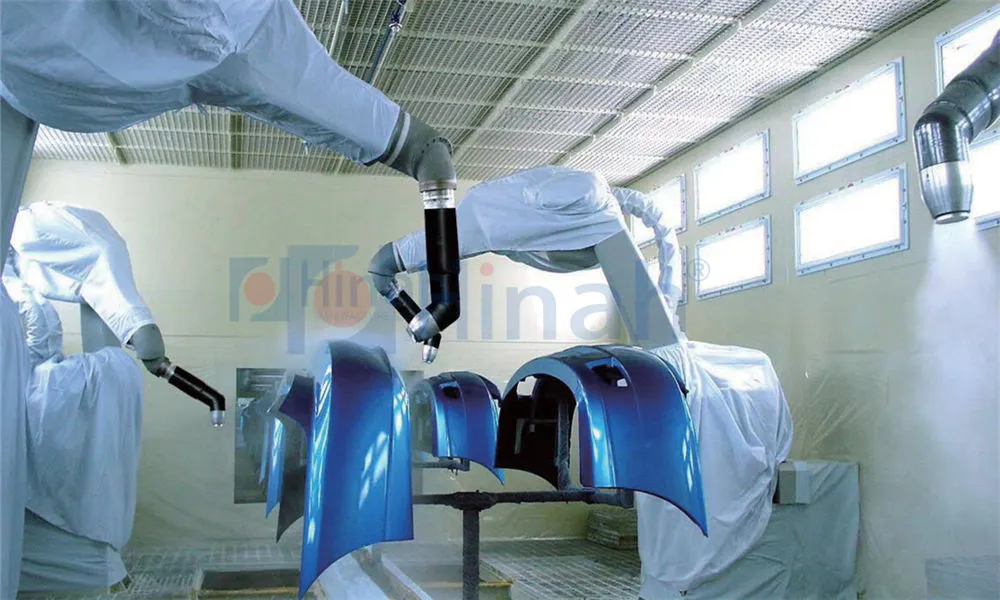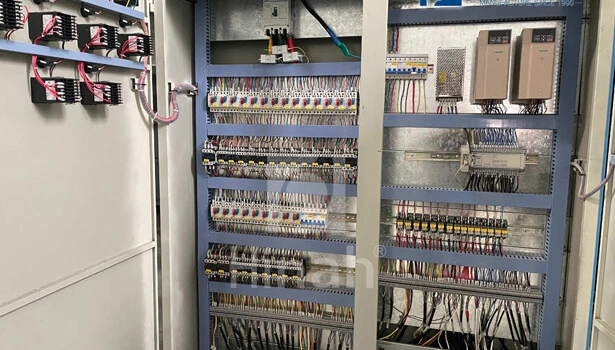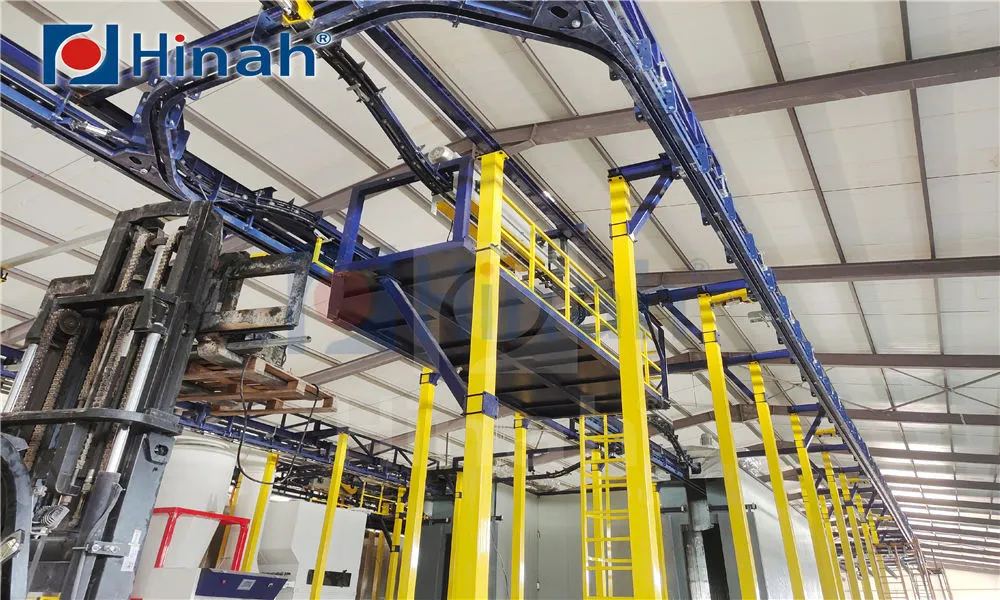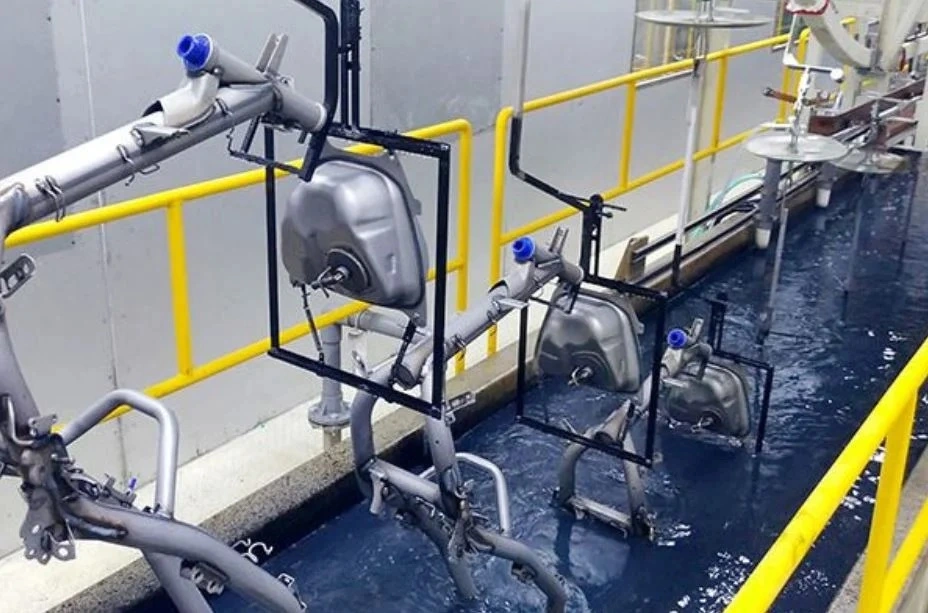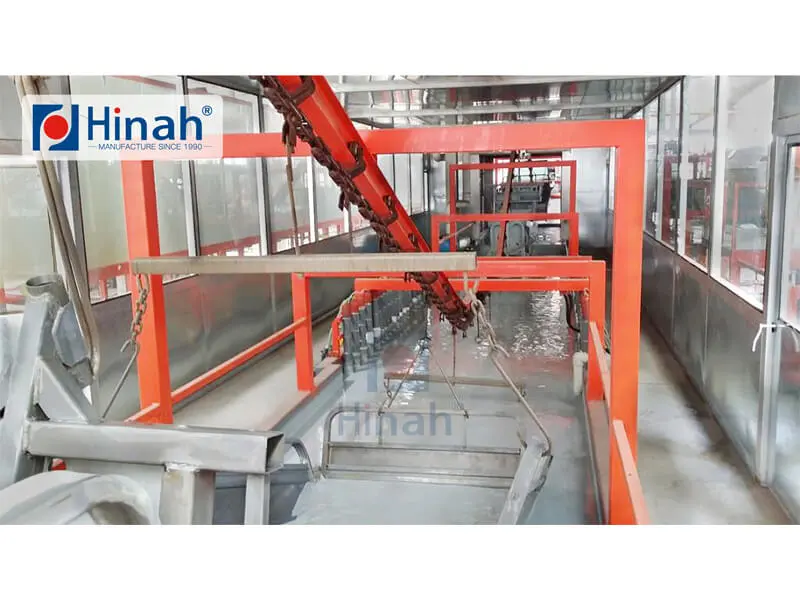Powder coating has revolutionized surface finishing, offering superior durability, environmental benefits, and stunning aesthetic results compared to traditional liquid paints. At the heart of this process lies the powder coating plant – an integrated system transforming raw metal into beautifully protected products. Whether you're a manufacturer scaling up, a job shop expanding services, or an entrepreneur entering the market, understanding powder coating plants, from compact powder coating machine small setups to large automatic powder coating machine lines, is crucial. This comprehensive guide explores key components like the powder coating oven and powder coating paint, innovative solutions like the powder coating shipping container, and essential considerations such as powder coating plant price and finding reliable powder coating near me.
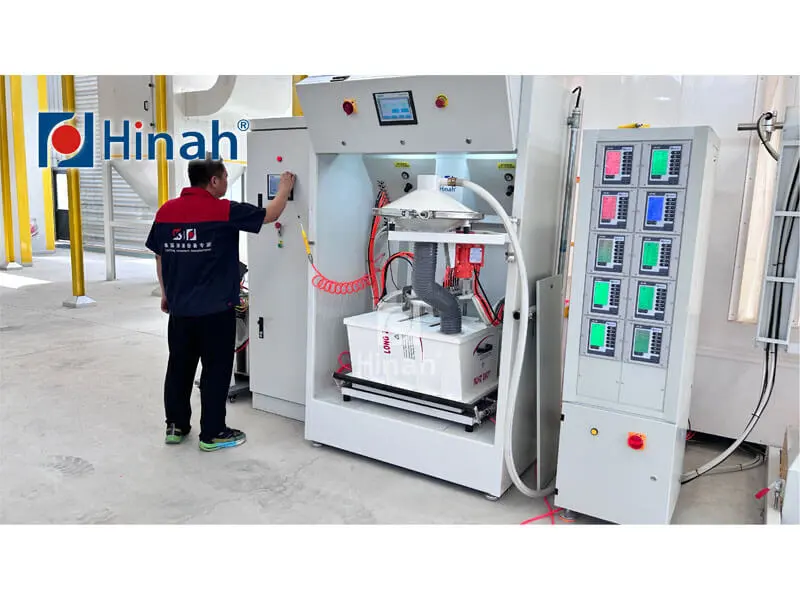
What is a Powder Coating Plant?
A powder coating plant is a complete, integrated facility designed for applying and curing thermosetting powder coatings onto metal substrates. It's far more than just a single powder coating machine; it's a coordinated workflow encompassing several key stages and pieces of equipment. The core process involves:
Pre-treatment: Cleaning and preparing the metal surface (degreasing, rinsing, chemical conversion coating like phosphate or chromate, final rinsing, and drying).
Powder Application: Electrostatic application of dry powder coating paint using a spray gun.
Curing: Heating the coated part in a powder coating oven to melt, flow, and chemically cross-link the powder into a durable finish.
A well-designed plant optimizes material flow, maximizes efficiency, ensures consistent quality, maintains safety, and controls environmental factors like overspray and emissions.
Core Components of a Powder Coating Plant
Every powder coating plant, regardless of size, relies on these fundamental components:
Pre-treatment System: This critical stage ensures adhesion and longevity. Systems range from manual wash stations for small shops to multi-stage automated spray or immersion tunnels. Proper pre-treatment is non-negotiable for quality results.
Powder Application Booth: An enclosed space where the powder coating paint is electrostatically applied. Booths contain overspray, protect operators, and incorporate recovery systems. Features include:
Efficient airflow design.
Durable construction (often coated steel).
Explosion-proof lighting and electricals.
Integral powder coating machine recovery (cartridge or cyclone).
The Powder Coating Machine: Application Technology
The powder coating machine – the spray gun and its control system – is central to the application process. Guns use either corona charging (high voltage) or tribo charging (friction) to impart a negative charge to the powder particles, attracting them to the grounded part. Key types include:
Manual Spray Guns: Operator-controlled, versatile for complex shapes and low-volume/high-mix work.
Automatic Powder Coating Machine: Mounted on reciprocators or robots for consistent, high-volume production with minimal labor. Ideal for repetitive parts.
Powder Coating Machine Small: Compact, often portable units suitable for hobbyists, very small shops, touch-ups, or R&D. These may have simpler recovery or none at all.
Powder Recovery System: Captures overspray powder for reuse, significantly improving material efficiency (often 95%+), reducing waste, and lowering operating costs. Common types are cartridge filter systems and cyclones.
The Powder Coating Oven: Curing Perfection
The powder coating oven provides the controlled heat necessary to cure the powder film. Curing typically occurs between 300°F and 450°F (149°C - 232°C) for 10-20 minutes, depending on the powder and part mass. Oven types include:
Convection Ovens: Heated air circulated by fans (most common).
Infrared (IR) Ovens: Radiant heat transfers energy directly to the part and powder, offering faster ramp-up times and potential energy savings, especially for simpler geometries.
Electric Powder Coating Oven: Utilize electric heating elements (resistance coils, Calrods, or IR emitters). Often chosen for cleaner operation, easier installation (no gas line required), precise temperature control, and suitability for smaller operations or locations lacking gas infrastructure.
Combination Ovens: Use IR for rapid heat-up and convection for soak time and uniformity.
Material Handling System: Transports parts efficiently through the entire process (pre-treatment, application, curing, cooling). Options include overhead conveyors (power & free, monorail), belt conveyors, floor conveyors, manual carts, or indexing systems. Design impacts plant throughput and footprint.
Control System: Manages and monitors the entire process (oven temperatures, conveyor speed, booth airflow, gun settings), ensuring consistency, efficiency, and safety. Modern PLC-based systems offer data logging and remote monitoring.
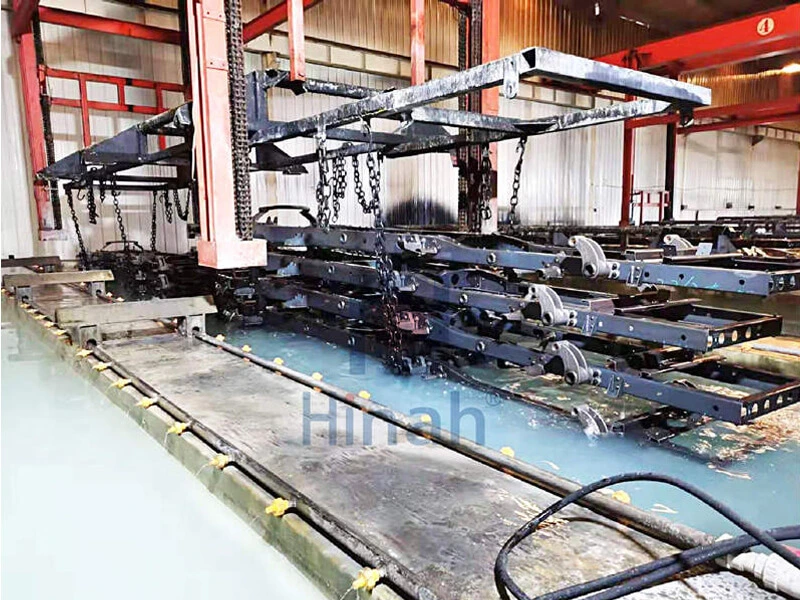
Types of Powder Coating Plant Setups
Powder coating plants vary dramatically based on scale, budget, and application:
Manual Batch Systems: Ideal for job shops, prototyping, or low-volume/high-mix production. Operators manually move parts on carts or racks between pre-treatment stations, a manual spray booth, and a batch powder coating oven (often an electric powder coating oven for simplicity). A compact powder coating machine small setup often falls into this category.
In-Line Conveyorized Systems: The backbone of medium to high-volume production. Parts move continuously via conveyor through pre-treatment stages, the application booth (often with manual and/or automatic powder coating machine stations), the curing oven (powder coating oven), and cooling zones. Highly efficient but requires significant space and investment.
Powder Coating Shipping Container Solutions: A revolutionary approach offering mobility and rapid deployment. A standard shipping container is modified into a self-contained powder coating plant, housing pre-treatment (sometimes simplified), a spray booth with recovery, and an integrated powder coating oven (often electric). Perfect for:
Field operations (construction, pipeline, wind turbine maintenance).
Temporary or overflow capacity.
Start-ups needing a lower initial footprint/cost.
Disaster recovery support.
Remote locations. These turnkey units provide a surprisingly complete powder coating set in a mobile format.
Compact Systems / Starter Kits: A basic powder coating set often includes a manual spray gun, small booth (sometimes with basic recovery), and a benchtop or small walk-in batch powder coating oven (frequently an electric powder coating oven). Targets hobbyists, very small businesses, or those doing touch-up work. Essentially a powder coating machine small integrated package.
Key Considerations When Buying a Powder Coating Plant
Finding the right powder coating plant for sale requires careful analysis:
Production Requirements:
Volume: Average and peak daily/weekly output (sq ft or number of parts).
Part Size & Geometry: Maximum dimensions, weight, complexity (dictates booth/oven size, conveyor type, need for manual vs. automatic powder coating machine).
Material: Primarily metals, but specific alloys may influence pre-treatment.
Available Space & Layout: Measure floor space and ceiling height meticulously. Consider workflow (linear vs. U-shape), access points, and utilities location. A powder coating shipping container solution inherently solves space/permitting challenges in many cases.
Budget & Powder Coating Plant Price:
Capital Cost: Varies enormously. A powder coating machine small setup might cost a few thousand dollars. A basic manual batch plant starts around $50k-$100k. A full in-line system can easily exceed $500k+. Powder coating shipping container units typically range from $100k to $250k+. Automatic powder coating machine integration adds significant cost.
Operating Costs: Consumables (powder, chemicals, filters), utilities (gas/electric for ovens, compressed air, water), maintenance, labor. Electric powder coating oven costs depend heavily on local electricity rates.
Powder Types & Quality Needs: The desired finish quality (appearance, durability specs) dictates pre-treatment requirements, booth filtration, and oven uniformity. Some powders have specific curing profiles.
Automation Level: Balance labor costs, desired throughput, and consistency. Automatic powder coating machine systems (reciprocators, robots) increase output but require higher investment and programming.
Regulatory & Environmental Compliance: Address local regulations for air emissions (VOC/HAPs are minimal with powder, but particulate matters), waste disposal (pre-treatment sludge, spent powder), wastewater (from pre-treatment), and fire/explosion safety (NFPA 33, 70). Booth filtration and recovery systems are critical.
Vendor Selection & Support: Choose reputable suppliers with experience in your industry segment. Look for strong technical support, training, spare parts availability, and service. Searching "powder coating near me" can help identify local suppliers or service providers.
Powder Coating Paint: The Essential Ingredient
The powder coating paint itself is a cornerstone of the process. This dry, free-flowing powder consists of:
Resin: The backbone (epoxy, polyester, polyurethane, hybrid, acrylic) determining properties like durability, UV resistance, and chemical resistance.
Curing Agent: Reacts with resin under heat to form the final cross-linked film.
Pigments: Provide color, opacity, and special effects (metallics, textures).
Additives: Enhance flow, gloss control, texture, and stability.
Choosing the right powder type (TGIC vs. TGIC-free polyester, epoxy for indoor) is critical for the application's performance requirements and environmental regulations.
Finding Services and Equipment Locally
Not everyone needs to own a plant. Searching "powder coating near me" is invaluable for:
Job Shops: Outsourcing coating needs efficiently.
Businesses Needing Parts Coated: Finding reliable local applicators.
Potential Buyers: Visiting local plants to see equipment in action before purchasing a powder coating plant for sale.
Suppliers: Locating vendors for powder coating paint, spare parts, or even compact powder coating machine small units.
Understanding Powder Coating Plant Price Factors
The powder coating plant price is highly variable. Key cost drivers include:
Scale & Complexity: A large in-line system costs vastly more than a powder coating machine small batch kit or a powder coating shipping container.
Automation: Automatic powder coating machine integration (robots, reciprocators) significantly increases cost.
Oven Type & Size: Larger ovens and high-efficiency designs cost more. Electric powder coating oven installation might be simpler but operational costs differ. Infrared vs. convection also impacts price.
Pre-treatment System: Multi-stage automated systems are more expensive than simple manual wash stations.
Recovery System: Advanced cartridge systems with high efficiency cost more than basic cyclones or systems without recovery.
Material Handling: Complex overhead conveyors cost significantly more than simple carts.
Control System Sophistication: Basic controls vs. advanced PLCs with HMI and data logging.
Brand & Quality: Reputable manufacturers often command higher prices for proven reliability.
Customization: Bespoke solutions cost more than standard designs.
Installation & Commissioning: Site prep, utility connections, and setup labor add to the total cost. Obtain detailed quotes specifying all components and services.
Benefits of Investing in a Powder Coating Plant
Despite the investment, a well-run powder coating plant offers compelling advantages:
Superior Finish Quality: Excellent durability, corrosion resistance, impact resistance, and color/gloss retention.
Environmental Advantages: Near-zero VOCs (Volatile Organic Compounds), minimal hazardous waste (overspray is reclaimed), reduced fire hazard compared to solvents.
Economic Efficiency: High material utilization (up to 95%+ with recovery), reduced energy costs (compared to some liquid cure ovens), less rework, and faster production cycles possible.
Operational Efficiency: Faster cure times than many liquid paints, simplified process control, potential for high automation (automatic powder coating machine).
Versatility: Can coat a vast array of metal products (automotive, appliances, architecture, furniture, industrial equipment, etc.).
Establishing a successful powder coating plant requires careful planning around production needs, space, budget (powder coating plant price), and regulatory compliance. From a simple powder coating machine small setup or a versatile powder coating shipping container to a fully automated in-line facility with automatic powder coating machine systems, the right solution exists. Core components – the powder coating oven (including efficient electric powder coating oven options), the application technology (powder coating machine), effective recovery, and proper pre-treatment – must work harmoniously using high-quality powder coating paint. Whether you're searching for "powder coating near me" to outsource work or actively looking for a powder coating plant for sale to bring finishing in-house, understanding the technology and options empowers smarter decisions. By investing in the appropriate powder coating set and technology, businesses can achieve exceptional, durable, and environmentally responsible finishes that drive customer satisfaction and operational efficiency.
FAQ
➤What is a powder coating plant?
A powder coating plant is an industrial facility specifically designed and equipped to apply powder coating finishes to various objects (substrates). It houses the necessary infrastructure and equipment for the entire powder coating process, including pre-treatment stages (cleaning, rinsing, chemical conversion coating), drying, powder application (typically using electrostatic spray guns in a booth), curing ovens, and post-curing cooling areas. Environmental control systems for air filtration and ventilation are also crucial components.
➤What industry does powder coating belong to?
Powder coating belongs primarily to the Industrial Manufacturing sector, specifically within the Surface Finishing or Industrial Coating industry. It serves as a key process technology across numerous downstream industries including:
Automotive & Transportation (wheels, bumpers, engine parts, bicycles, trailers, agricultural equipment)
Appliances (ovens, refrigerators, washer/dryers, dishwasher racks)
Architecture & Building Products (window frames, door frames, fencing, aluminium extrusions, facades, fixtures)
Furniture (office furniture, garden furniture, shelving)
Consumer Goods (electronics enclosures, lighting fixtures, sporting goods, tools)
General Industrial (machinery, storage racks, pipes, valves, electrical enclosures)
➤What is the purpose of powder coating?
The primary purposes of powder coating are:
Protection: To provide a highly durable, corrosion-resistant, and chip-resistant barrier that protects the underlying metal (or sometimes other materials) from environmental damage, chemicals, moisture, and UV degradation.
Decoration/Aesthetics: To provide an attractive, high-quality finish with a wide range of colors, textures (e.g., smooth, wrinkled, matte, glossy, metallic), and effects.
Durability: To create a finish that is significantly tougher, more flexible, and longer-lasting than many conventional liquid paints.
Environmental & Safety Benefits: To use a coating process that emits negligible VOCs (Volatile Organic Compounds), allows for efficient material usage (overspray can often be recycled), and reduces fire hazard compared to solvent-based paints.
➤Can powder coating be removed?
Yes, powder coating can be removed, but it is generally much more difficult and requires more aggressive methods than removing traditional liquid paint. Common removal techniques include:
Chemical Stripping: Using strong, heated alkaline or acidic stripping solutions to dissolve the coating. Requires careful handling and disposal.
Abrasive Blasting: Using media like sand, plastic beads, soda, or dry ice propelled at high pressure to physically abrade the coating off the surface. Effectiveness depends on the media, pressure, substrate hardness, and coating thickness/type.
Thermal Methods: Burning the coating off in a high-temperature oven (pyrolysis). Primarily used for reclaiming metal parts and requires specialized, high-energy equipment.
Mechanical Methods: Grinding or sanding. Labor-intensive and suitable only for small areas or specific applications.
The choice of removal method depends heavily on the substrate material, the type of powder coating, the desired surface finish after removal, environmental considerations, and cost.


